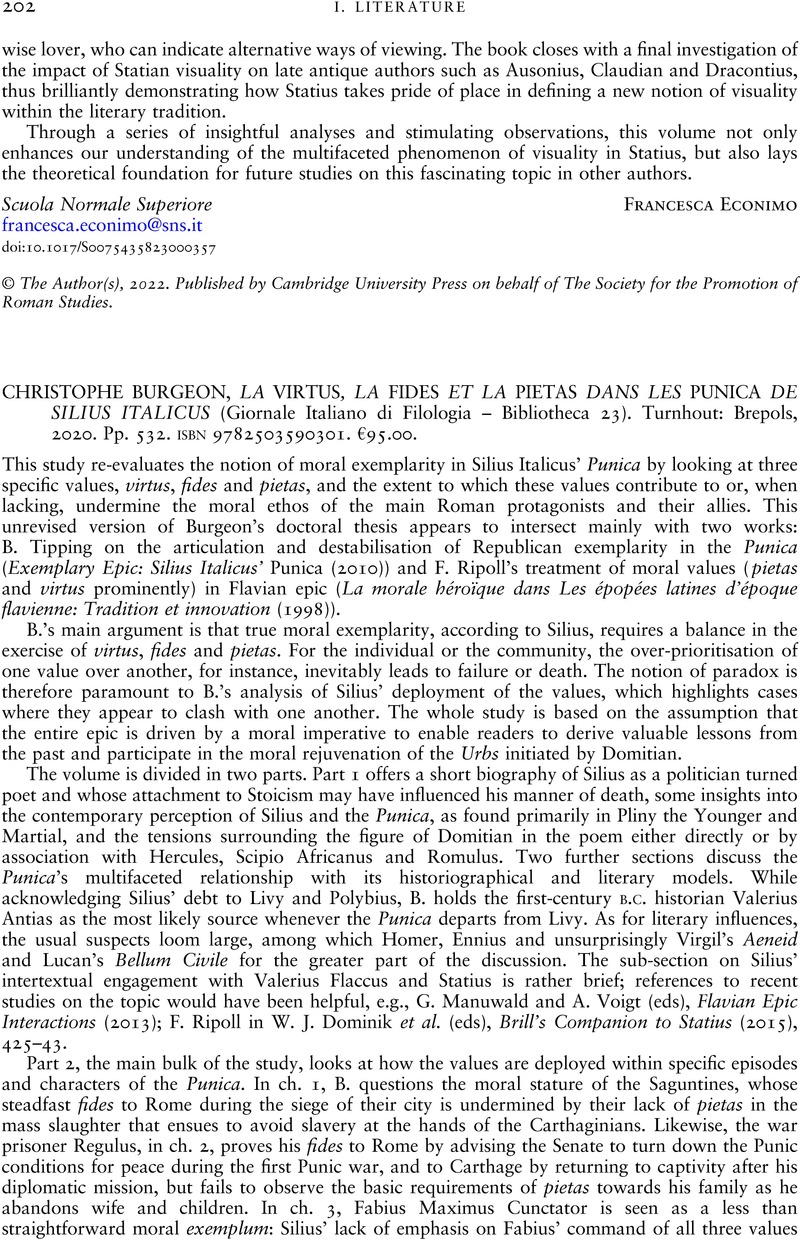No CrossRef data available.
Article contents
CHRISTOPHE BURGEON, LA VIRTUS, LA FIDES ET LA PIETAS DANS LES PUNICA DE SILIUS ITALICUS (Giornale Italiano di Filologia – Bibliotheca 23). Turnhout: Brepols, 2020. Pp. 532. isbn 9782503590301. €95.00.
Review products
CHRISTOPHE BURGEON, LA VIRTUS, LA FIDES ET LA PIETAS DANS LES PUNICA DE SILIUS ITALICUS (Giornale Italiano di Filologia – Bibliotheca 23). Turnhout: Brepols, 2020. Pp. 532. isbn 9782503590301. €95.00.
Published online by Cambridge University Press: 21 November 2022
Abstract
An abstract is not available for this content so a preview has been provided. Please use the Get access link above for information on how to access this content.

- Type
- Reviews
- Information
- Copyright
- Copyright © The Author(s), 2022. Published by Cambridge University Press on behalf of The Society for the Promotion of Roman Studies


